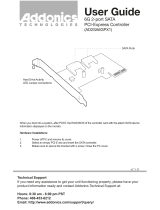
- 5 -
Chapter 3 Drivers Installation ........................................................................................65
3-1 Installing Chipset Drivers ............................................................................... 65
3-2 Application Software ...................................................................................... 66
3-3 Technical Manuals .......................................................................................... 66
3-4 Contact ........................................................................................................... 67
3-5 System ........................................................................................................... 67
3-6 Download Center ........................................................................................... 68
3-7 New Utilities ................................................................................................... 68
Chapter 4 Unique Features ...........................................................................................69
4-1 Xpress Recovery2 .......................................................................................... 69
4-2 BIOS Update Utilities ..................................................................................... 72
4-2-1 Updating the BIOS with the Q-Flash Utility .............................................................72
4-2-2 Updating the BIOS with the @BIOS Utility .............................................................75
4-3 EasyTune 6 .................................................................................................... 76
4-4 Dynamic Energy Saver
TM
2 ............................................................................ 77
4-5 Q-Share .......................................................................................................... 79
4-6 Smart 6
™
........................................................................................................ 80
4-7 Auto Green ..................................................................................................... 83
4-8 eXtreme Hard Drive (X.H.D) .......................................................................... 84
4-9 Teaming
..............................................................................................85
Chapter 5 Appendix ......................................................................................................87
5-1 Conguring SATA Hard Drive(s) ..................................................................... 87
5-1-1 Conguring Intel P55 SATA Controllers .................................................................87
5-1-2 Conguring JMicron JMB362/GIGABYTE SATA2 SATA Controller ........................95
5-1-3 Conguring Marvell 9128 SATA Controller ...........................................................101
5-1-4 Making a SATA RAID/AHCI Driver Diskette ..........................................................106
5-1-5 Installing the SATA RAID/AHCI Driver and Operating System .............................108
5-2 Conguring Audio Input and Output ............................................................. 121
5-2-1 Conguring 2/4/5.1/7.1-Channel Audio .................................................................121
5-2-2 Conguring S/PDIF In/Out ....................................................................................123
5-2-3 Enabling the Dolby Home Theater Function ........................................................125
5-2-4 Conguring Microphone Recording ......................................................................126
5-2-5 Using the Sound Recorder ...................................................................................128
5-3 Troubleshooting............................................................................................ 129
5-3-1 Frequently Asked Questions ................................................................................129
5-3-2 Troubleshooting Procedure ..................................................................................130
5-4 POST Error Code ......................................................................................... 132
5-5 Regulatory Statements ................................................................................. 136




















